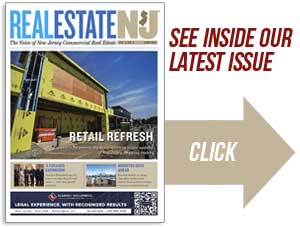By Michael G. McGuinness

Much of the workforce has been absent from offices/workplaces and transportation systems since mid-March. Has this absence “made hearts grow fonder” to return? Not entirely, according to some experts. COVID-19 markedly altered the U.S. macroeconomic landscape, as states issued stay-at-home orders designed to limit the spread of the disease. Since the first U.S. case was identified in January 2020, nearly 1.9 million diagnoses have been reported, and close to 110,000 people have died. Workers across multiple industries are staying home, and it is unclear how or when the majority will return to their workplaces. Due to the resulting turmoil in the national economy, rising unemployment and continued uncertainty about future work arrangements, the U.S. office market absorption is forecast to decline into negative territory through the second quarter of 2021. The steepest declines may be experienced in the third quarter of 2020, with NAIOP’s model forecasting a drop of 16.3 million square feet. Absorption rates will increase as the economy begins to gain traction in Q2 2021, according to the NAIOP Office Space Demand Forecast for Q2 2020.
The report also finds that, while the economic benefits of density and agglomeration are well-documented, COVID-19 may necessitate a type of “de-densification” in office space, at least in the near term. As a result, current office-using space will face short-term logistical challenges. While states begin the process of a staged reopening, employees will arguably put a premium on workplace cleanliness and personal space, which may contribute to increased demand for office space. Many large organizations have begun to consider a “hub-and-spoke” model for work arrangements, enhanced by technology that allows for the economic gains from agglomeration while recognizing the challenges created by the pandemic. The variables used in this forecast included the growth rate in real gross domestic product, corporate profits of domestic industries, total employment in the financial services sector (a measure and proxy for office-using employment) and two variables from the Institute for Supply Management’s Non-Manufacturing Indices that reflect inventory levels, and the length of time it takes suppliers to deliver materials and parts that are integral to service sector businesses.
This transformational shock and shift to de-densification of the workforce has suddenly put suburban New Jersey in a sweet spot. Our less dense and car-centric suburbs are looking attractive now to the future office and mixed-use market. This shift away from density may last a while — potentially two years or so — until effective vaccines and treatment are widely available, and people are comfortable in crowds. High-rises in the downtowns and dense central business districts of New York City and, to a lesser degree, New Jersey’s largest cities, are now strangely disadvantaged due to their tenants’ reliance on currently disfavored transportation systems — both horizontal (mass transit) and vertical (elevators) to access offices. With the heightened fear of contracting this very contagious virus, workers are constantly reminded to avoid crowds and confining spaces. The suburbs are also favored due to historically low gas prices, millennials starting families and Generation Z, which is just entering the workforce and looking to stay safe. “The developers who have been aggressive in investing capital in modernizing and, in some cases, reviving suburban facilities are in a position to enjoy the fruits of this potential migration to the suburbs, especially those providing downtown-style amenities. Because no matter where they are, the growing millennial and Gen Z workforce will demand that everything is accessible by both their footsteps and fingertips.” (Matt Dolly, May 18 blog post, https://transwestern.com/news-detail/fringe-benefits-pandemic-spurs-opportunity-for-suburban-real-estate-owners). “The suburbs are clearly on their way to becoming a favored asset class for offices … Companies that don’t want to cram employees into headquarter offices are considering smaller, satellite offices in the suburbs closer to where their employees live. Microsoft, to name one example, recently signed a 400,000-square foot lease in Reston, Va. with Boston Properties in an expansion of its smaller nearby space.” (Erika Morphy, May 26 Bloomberg Real Estate Report podcast of Interview with Boston Fed President Eric Rosengren).
Speaking of generations, Gensler has done a great deal of work on the experiences of workers while sheltering in place and how those experiences are influencing expectations for returning to the workplace (U.S. Work from Home Survey 2020 and Back to the Office Work Return Strategies). Not surprisingly, the study found that 70 percent of people want to work in the office for most of their week. However, they want to see changes from the pre-pandemic density levels, ensuring there is more space for physical distancing while addressing noise, cleaning protocols, less sharing of equipment and items, more flexibility to work from home as needed and more autonomy. Despite the mainstream adoption of virtual collaboration technologies, the main reason employees want to be in the office is the people. Meetings, socializing and impromptu face-to-face interactions were rated at the top. When working from home, 55 percent of respondents said collaborating with others is harder, while 51 percent said staying up to date on the work of others is more difficult.
It was fascinating to look at how the different generations viewed their experiences. Overall, Gensler found that younger generations are less productive and less satisfied working at home. One would think that millennials and Gen Z workers would be more satisfied with remote work, given their greater experience with working and socializing virtually. However, they were less likely to feel accomplished at the end of a typical day, and less aware of what is expected of them, and how their work contributes to company goals. Having access to the more seasoned employees at the office apparently makes a difference. They also struggled more to avoid distractions and maintain a work-life balance, often dealing with roommates, tight spaces and poor technology. On the other hand, older workers tend to be more disciplined and more likely to feel accomplished at the end of the day, and found it easier to maintain a work-life balance and avoid distractions at home. As one of the younger baby boomers, I wholeheartedly agree. A hybrid work week (some days in the office, some days working from home) is likely to be our next normal. I could get used to that!
Michael McGuinness is CEO of NAIOP New Jersey and has led the commercial real estate development association since 1997. NAIOP represents developers, owners, asset managers and investors of commercial, industrial and mixed-use properties, with 830 members in New Jersey and over 19,000 members throughout North America.










